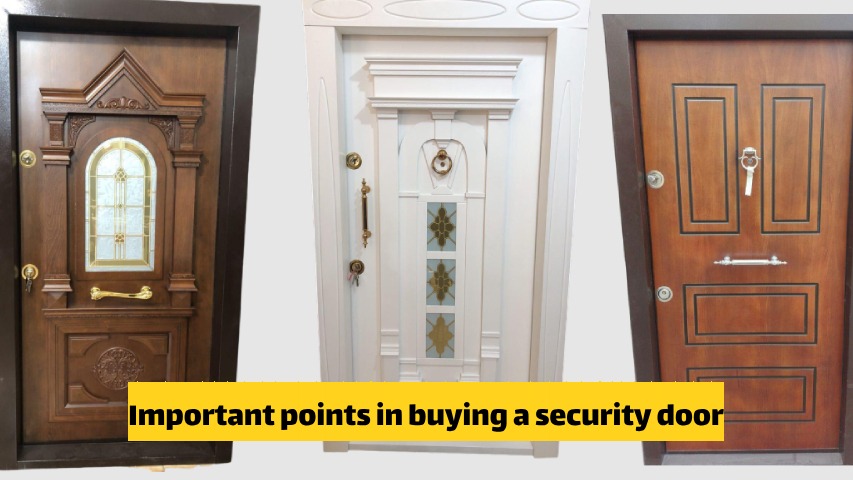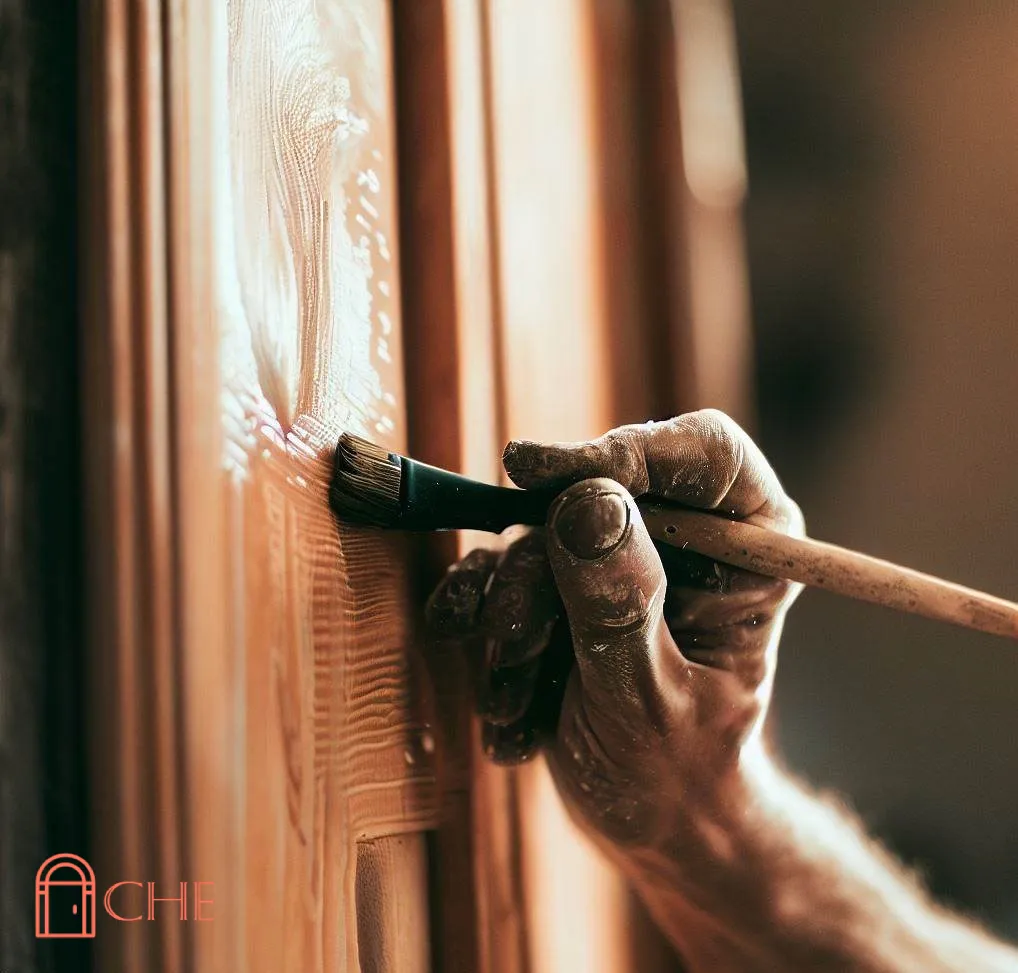– How to waterproof a wooden door??? + Not to worry!!! Waterproofing a wooden door creates numerous applications and opportunities in various building structures for esteemed customers. The aesthetic appeal, durability, and versatility of these wooden doors in adapting to different environments and decorative styles have led many individuals with varied tastes and exacting standards to prefer wooden doors to other options. In this context, the issue of moisture and water absorption by wood can be problematic and may serve as an obstacle in choosing this material. This concern is especially relevant in humid areas and situations where the door frequently comes into contact with water. However, with the technology to convert wooden doors into waterproof doors, there is no need to worry, as this problem can be easily resolved. Wooden Doors ، From Diverse Applications to Becoming Waterproof Doors are essential components of buildings, complementing their structure. The diversity in types, sizes, and uses of doors allows individuals with varying tastes, purchasing requirements, and financial capacities to find a suitable product. The characteristics of different types of wooden doors are highly diverse, offering extensive applications. Alongside their versatility, waterproof wooden doors have received positive feedback and gained a large following. As a result, the production of waterproof wooden doors has become a significant sector within the door manufacturing industry. Pre-made doors can also be converted into waterproof doors using the methods discussed in this article. This is particularly necessary for wooden doors exposed to water contact, such as restroom and bathroom doors, where the surrounding environment is often humid. These adjustments maintain clarity while adhering more closely to Google’s readability and content structure standards. Different Methods of Waterproofing Doors Wooden doors, with their beauty and versatility, complement various decorative styles and play a crucial role in enhancing the aesthetics and completing the decoration of an environment. However, if wood absorbs moisture for any reason, it swells, leading to warping and potentially causing its layers to degrade, thereby diminishing its beauty. Additionally, this reduces the durability and lifespan of the wood, ultimately leading it towards complete deterioration. For these reasons, owners and manufacturers of wooden doors employ various methods to waterproof them. There are several techniques for this purpose, with the primary methods involving the application of handcrafted oils and the use of sealants, both of which can effectively prevent moisture penetration into the wood. This depends on the meticulous execution of all details in a principled and correct manner. Fat-repelling and hydrophobic Nanocoatings and the process of waterproofing solid wood doors The use of fat-repelling and hydrophobic nanomaterials, along with epoxy resins, is among the methods employed for achieving waterproofing. However, it is crucial to consider the type of wood and its characteristics in these applications. For instance, MDF and polished woods cannot utilize nanotechnology for waterproofing. Additionally, the type of material used on wood can impact its color. Therefore, comprehensive knowledge in this regard is necessary to fully understand the materials’ implications. Primers, as polymer materials and their combinations, are also widely used in the industry for waterproofing wooden items, including solid wood doors. Often, these substances are thick and pigmented, requiring dilution before application. They are thinned using specific solvents and then applied to the desired wooden surfaces. To achieve optimal results, it is crucial to allow sufficient time for complete drying. It’s important to note that wood primer is flammable and emits toxic vapors. Hence, using a mask and special gloves during application is essential. Promptly wash any skin exposed to these substances. Furthermore, it is advisable to avoid using this type of material on wooden utensils and similar items for safety reasons. Waterproofing the wooden doors with handcrafted oils In this method, a combination of natural oils such as linseed oil, solvents 402 and 403, and some polyurethane is used. The use of solvent for dilution and polyurethane for accelerating the drying process is crucial to eliminate stickiness and enhance the durability of the waterproofing material. To optimize the process, after mixing these substances, apply the mixture to the wood surface thoroughly using a soft brush or a completely soaked cloth. Ensure no part of the wood remains dry and that the oil solution is evenly applied. Otherwise, that particular area will lose its waterproofing properties. After this step, remove excess oil and additives with a clean cloth and dry the surface with a clean and dry towel. Then, allow sufficient time for the oil to completely dry on the wood. The drying time varies depending on the concentration of materials, the amount used, and environmental conditions, which may take overnight or longer. The use of polyurethane increases the glossiness of the waterproof surface and speeds up the drying process of the entire wooden door. Note that cloths soaked with this substance are highly flammable and can spontaneously ignite. To prevent this hazard, store them initially in a container (preferably containing water) and dispose of them after removing the oily substance. Using sealants to insulate wooden doors Polyurethanes and special lacquers, such as alcohol-based lacquers, are considered excellent sealants. For this reason, they are used to waterproof wooden doors. The main difference is that these materials do not require dilution or mixing with other substances. Simply apply the sealant thoroughly over the wood surface and its cracks, and wait for it to dry completely. These formulations do not contain oils, which significantly accelerates their evaporation and drying compared to previous methods. However, it is essential to take necessary ventilation precautions during their application due to the presence of chemical compounds that can affect respiratory health. In certain types of polyurethanes mixed with oils, which are commercially available and ready-made, greater longevity and durability are observed. Alcohol-based lacquers are combinations of oil, alcohol, resins, and solvents. After coloring and drying, these products form a hard and resistant coating that remains non-yellowing for extended periods, making them suitable for exterior wooden doors. Some examples of these solutions also protect wooden doors from ultraviolet radiation, which is an









